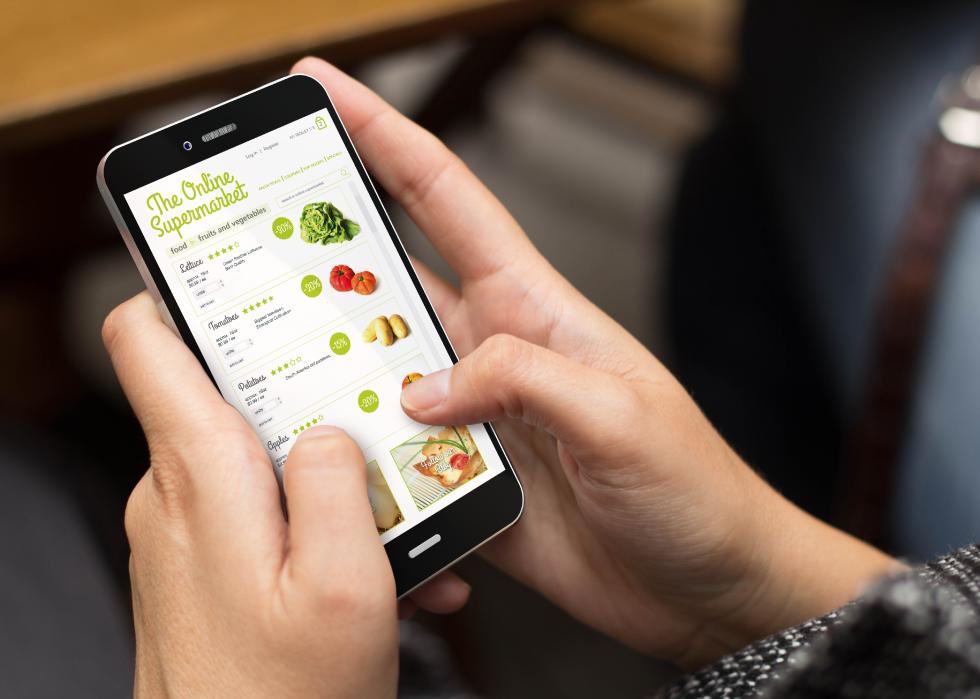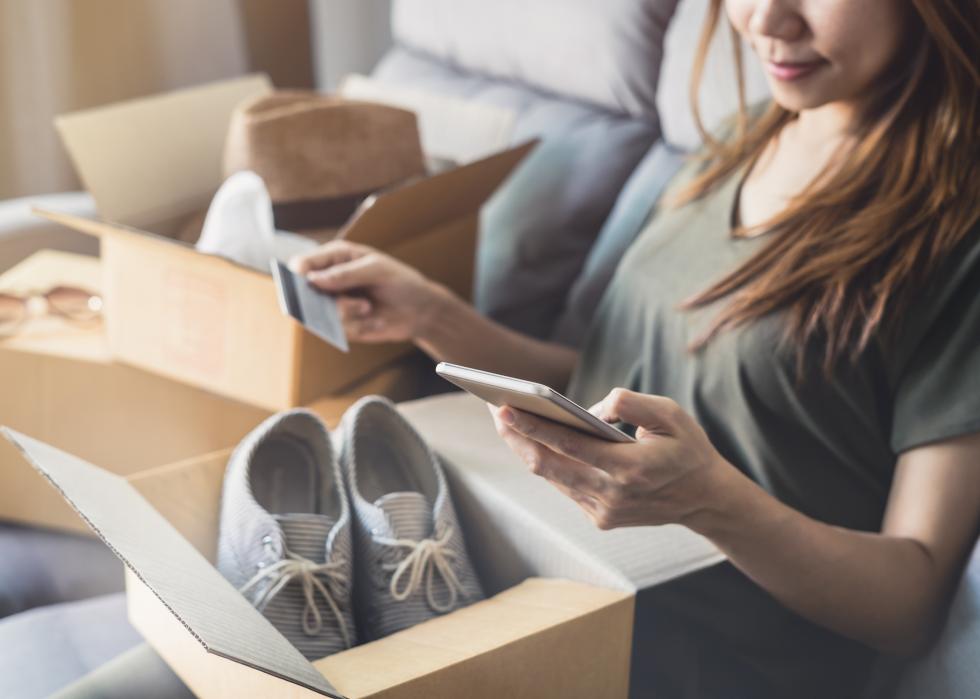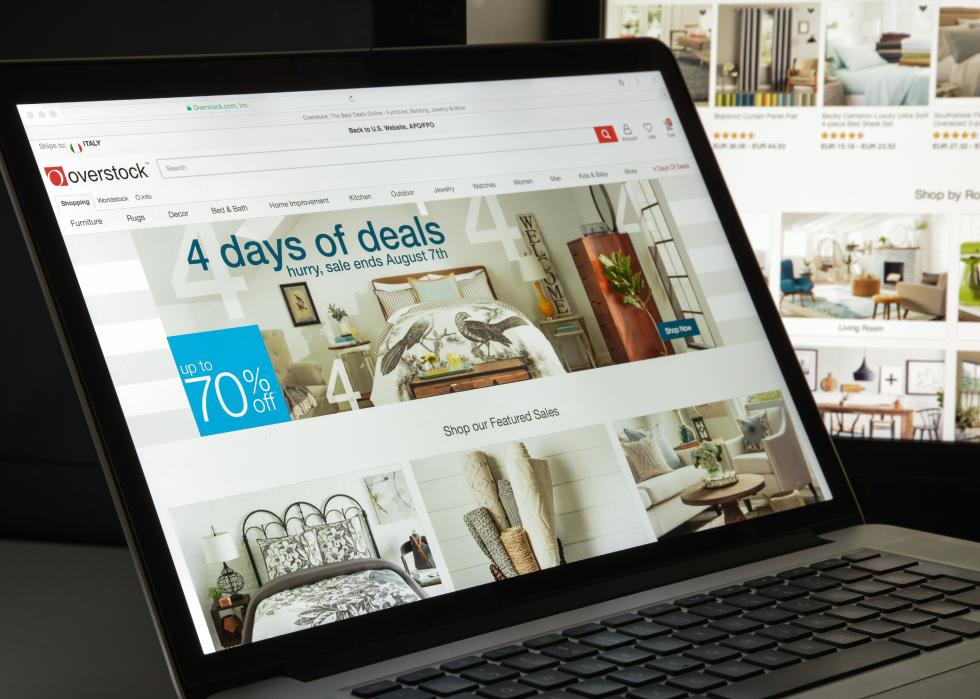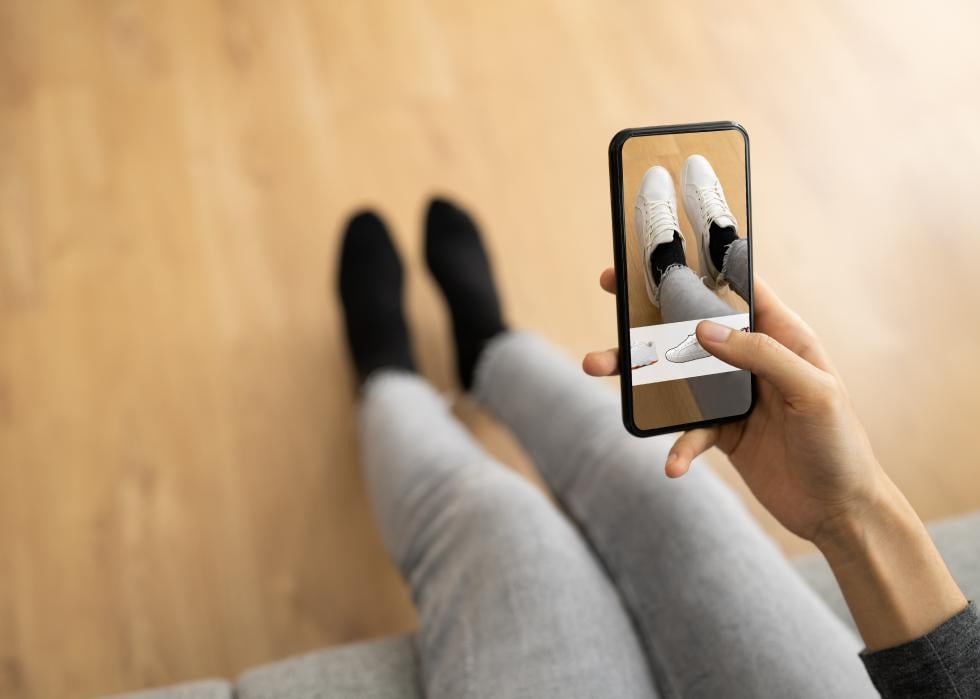
How online shopping has changed during COVID-19
This story originally appeared on Cheap Insurance and was produced and distributed in partnership with Stacker Studio.
How online shopping has changed during COVID-19
Chances are good that how you shop has changed significantly during the COVID-19 pandemic. That's not just because people were stuck at home during lockdowns or transitioned to work from home. It's also because they were increasingly seeking novelty in their products, changing brands for what was newer and more inexpensive. They were trying out more products in augmented reality before adding them to their cart, from earrings and eye shadow to new couches.
To track how our buying habits changed, Cheap Insurance collected information from a variety of government and industry sources to examine how the pandemic has impacted online shopping.
According to the Census Bureau's Annual Retail Trade Survey (published April 2022), e-commerce generated more than $800 billion in sales in 2020, boosted partly by a huge increase in online grocery orders. Meanwhile, clothing stores saw some of the biggest plummets in revenue, losing more than 25% of sales between 2019 and 2020, Some people may have put on office-appropriate tops for their Zoom calls, but the rest were keeping our cameras off in pajamas or athleisure. Plus, people who reported in to work as essential workers were more likely to rely on uniforms or specialized clothing like scrubs that aren't part of the general clothing market.
Continue reading to learn 10 ways COVID-19 has changed online shopping.

E-commerce sales grew by 43% during 2020
The Annual Retail Trade Survey examines the state of retail sales, both online and at traditional points of sale. The umbrella term "e-commerce" includes all transactions online that correspond with goods or services delivered in real life, plus all the infrastructure (like internet marketing) that supports those transactions. It makes sense that people turned to e-commerce during the most locked-down year of the pandemic in the U.S., increasing these sales by an astonishing 43% in one year. People especially turned to e-commerce for things like grocery shopping and restaurant ordering that were typically more "offline." At the same time, some industries suffered, like gas stations, bookstores, and clothing retailers.

Globally, people began shopping online more, but spending less
An October 2020 survey from the United Nations Conference of Trade and Development found that, between March and June 2020, online purchases increased by 6 to 10 percentage points across most product categories. However, average online monthly spending per shopper dropped markedly. Overall, Americans lost income stability and some percentage of their income during the pandemic. They may have been pushed to purchase things like groceries online if possible, but that doesn't mean they felt confident spending as much as they did before. Those trends seem to be true worldwide as well.

Online grocery shopping took off
Many other industries could fall away as nonessential during a crisis, but people still always need to eat. Grocery stores pivoted pretty quickly into pandemic mode, offering full delivery through third-party services like Instacart as well as hybrid options like curbside pickup. According to August 2021 estimates from Insider Intelligence, online grocery shopping spiked 63.9% in 2020, 12.3% in 2021, and will grow another 20.5% in 2022. In 2021, for the first time ever, more than half the U.S. population bought groceries online, per Insider Intelligence, marking a sea change for the notoriously low-margin grocery industry. Despite food prices increasing amid inflation, it seems some shoppers may stick with online grocery shopping, whether out of convenience or lingering concerns as the pandemic enters a less-acute phase.

More consumers are switching brands
In a survey conducted by McKinsey between February and March 2022, 46% U.S. consumers said they shopped a different brand in 2022 compared to 33% who did so in 2020. One reason is inflation, which has raised prices for almost everything. When money is tight, it makes sense to buy what is cheaper, whether that's the generic brand of tomato sauce or a new kids' clothing brand showing up on your Instagram feed. Today, consumers have a more "normal-seeming" selection of brands available as well, now that many of the worst supply chain issues have passed. People are also switching brands in pursuit of novelty to try out something new or different.

Shoppers are testing accessories, furniture, and more with augmented reality
In October 2020, Harvard Business Review reported on some of the ways augmented reality is changing the retail experience online and in stores. Many clothing retailers already offered some form of virtual try-on where a "similar" virtual body was used to model a brand of clothes. Now, others have made the leap to AR, placing images of earrings or beauty products on customers' faces and ears in situ. It's also a great way to try out furniture, letting customers simulate where to place a new couch or table in their living room. IBM's 2020 Retail Index Report found that this kind of technology has moved consumers five years closer to a future anchored in online shopping.

Out-of-stock messages are more common
With supply chain disruptions caused by everything from a lack of dock workers and shipping containers to factory shutdowns, shoppers became all too familiar with "out of stock" notifications on their favorite websites. Shoppers saw 60 billion out-of-stock messages between March 2020 and February 2022, according to Adobe's Digital Economy Index. The rate of these notifications has increased from 1 in 200 items to 1 in 59. During the height of pandemic panic shopping, photos of empty grocery shelves took over social media. But with the long tail of the supply chain, that phenomenon now stretches into clothing, video games, and much more.

An estimated half of all US adults made a purchase on social media in 2022
Social media platforms like Facebook let users buy some goods directly within their dedicated apps. On TikTok, users can buy through the e-commerce platform Shopify. On Instagram, certain users can sell goods using its proprietary Checkout service. And of course, there are still countless "click the link" and "store in bio" posts across social media, directing users to an account's proprietary e-commerce site.

People bought a lot more furniture online
People have spent more time in their homes than almost ever before during the last few years. Many have built new home offices and outfitted entire outdoor spaces to shift their activities toward the safety of home. Furniture and home furnishings saw the largest increase in e-commerce sales between 2019 and 2020, increasing by more than $41 billion, according to 2020 data from the U.S. Census Bureau. It's honestly surprising that any industry saw an increase from 2019 to 2020, when sales across the board were depressed. But this is e-commerce sales of furnishings, not overall sales including stores.

People around the globe plan to keep shopping online
Some in the industry have wondered if pandemic online shopping habits were temporary, caused by obstacles like lockdown. It's true more shoppers are returning to brick-and-mortar stores, but overall, online shopping has also remained steady. Respondents to a United Nations Conference on Trade and Development survey of around 3,700 consumers in nine rising economies expressed a desire to continue the online shopping habits they formed during the pandemic. That includes shopping from many different retailers, including through social media apps, and a different relationship to brand loyalty than prior to the pandemic.

Omnichannel shopping appears to be the new normal
From the growing body of data, it's clear that online shopping has reached a new level of influence in Americans' daily lives. Three in 4 U.S. consumers are interacting with brands through multiple online and in-store channels, according to a McKinsey survey conducted in February and March 2022. There are some ways this could be harmful, especially to businesses like restaurants and neighborhood boutiques that have relied on foot traffic and in-person services. But others, such as grocery stores, have been able to pivot to what consumers need most at a given time. And with in-app shopping on social media as well as AR try-ons, the next generation of online shopping may be unfolding.



